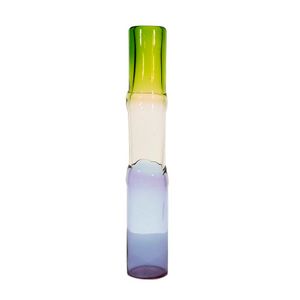George III Mahogany Sideboard with Feather Banded Top
You must be a subscriber, and be logged in to view price and dealer details.
Subscribe Now to view actual auction price for this item
When you subscribe, you have the option of setting the currency in which to display prices to $Au, $US, $NZ or Stg.
- Tapered Legs - found on both cabinet and country-made furniture from the 18th to the later 19th centuries. The leg sometimes terminates in a spade foot, though on most country furniture the taper continues for the whole length of the leg. The important thing to remember is that the taper ought only to be on the inside face of the leg, and the outer face should be straight and square. Some legs were made where both sides tapered, but in such a case the taper ought to be the same on both the inner and outer faces of the leg. Where the inside of a leg is straight, with only the outer face tapering, there is every reason to be suspicious
- George Iii - George III (1738 - 1820) was King of Great Britain and Ireland from 1760 to 1820.
- Feather Banding - Inlaid banding found on the edges of tables, drawers and other items, where two strips of veneer are laid at right angles to each other, but at 45 degrees to the perimeter of the edge, to give a herringbone effect.
- Mahogany - Mahogany is a dense, close grained red-coloured timber from the West Indies and Central America. It was first imported into Europe in the the early 18th century and its use continued through the 19th century. It was popular for furniture making because of its strength, the wide boards available, the distinctive grain on some boards, termed flame mahogany and the rich warm colour of the timber when it was polished.. The "flame" was produced where a limb grew out from the trunk of the tree, and this timber was usually sliced into veneers for feature panels on doors, backs and cornices.
Some terms used to describe mahogany relate to the country from which it originally came, such as "Cuban" mahogany, "Honduras" mahogany etc. However unless the wood has been tested the names assigned are more a selling feature, rather than a true indication of the timber's origin.
This item has been included into following indexes:
Visually similar items

Oiva Toikka (Finnish, b. 1931), bamboo vase, c. 1960, manufactured by Nuutajärvi Notsjo, Finland, green, clear and purple glass, signed 'Oiva Toikka, Nutijaavi Nosjo, height 64 cm

Georgian corner cabinet 67 cm wide approx

Pair of Japanese Imari porcelain vases, 22 cm high (2)

A morganite and diamond ring. The oval morganite 14.2 mm x 12.12 mm of estimated weight 7.69 carats surrounded by 24 claw set round brilliant diamonds of estimated weight 0.74 carats. 18ct white and rose gold. Weight 12.3 grams. Size N.
